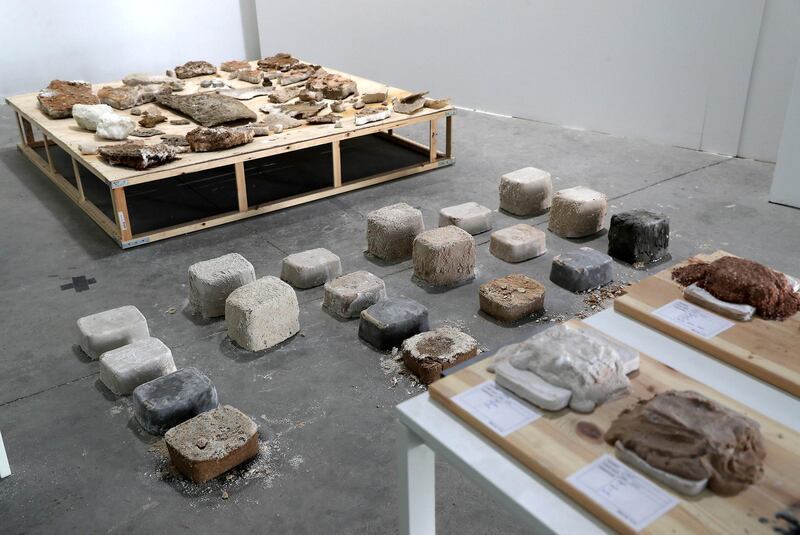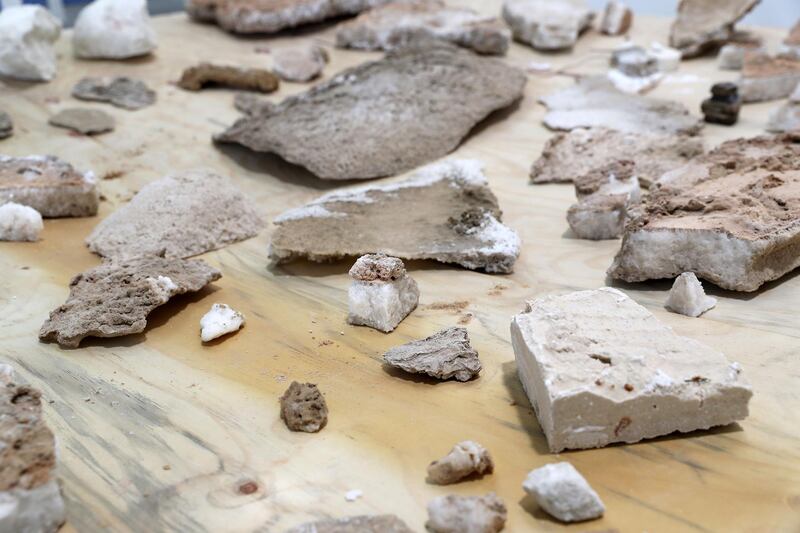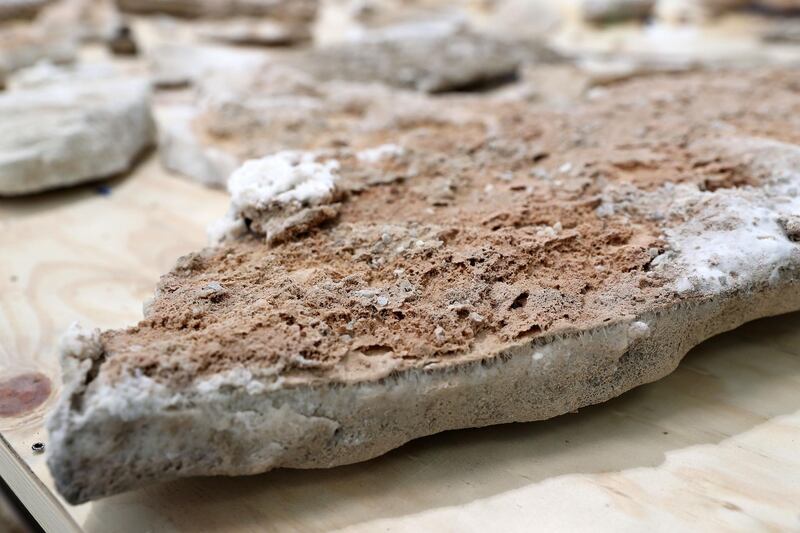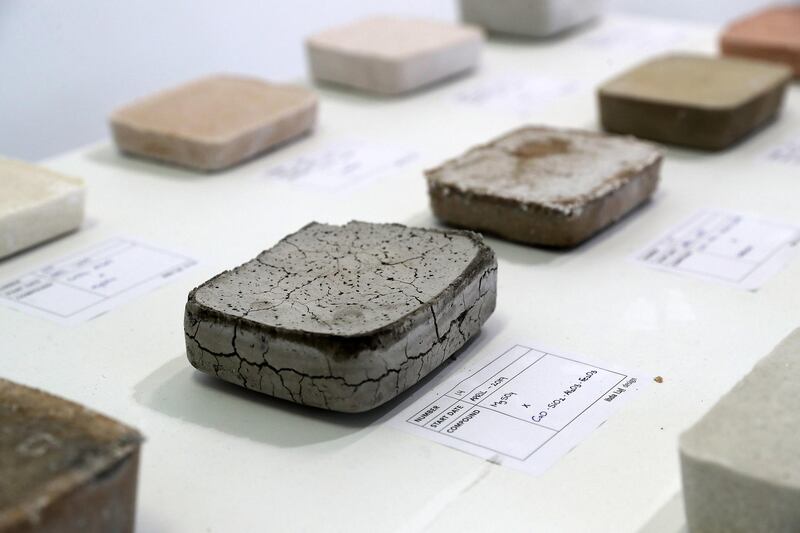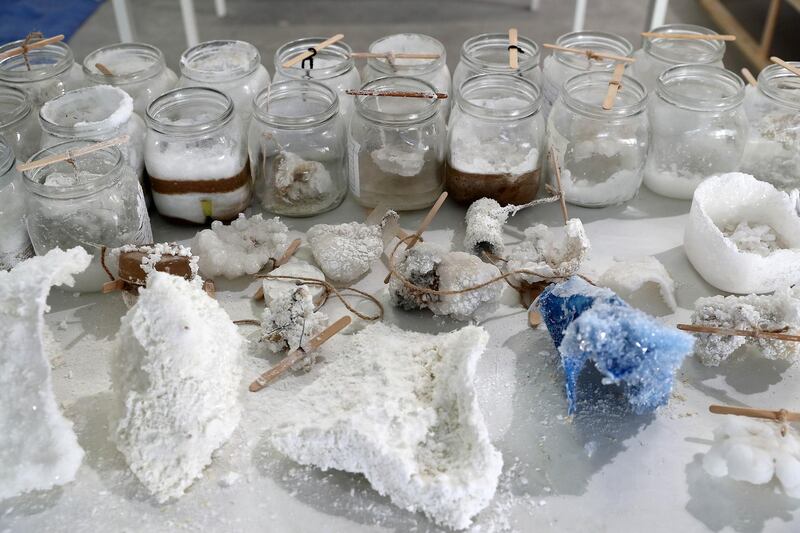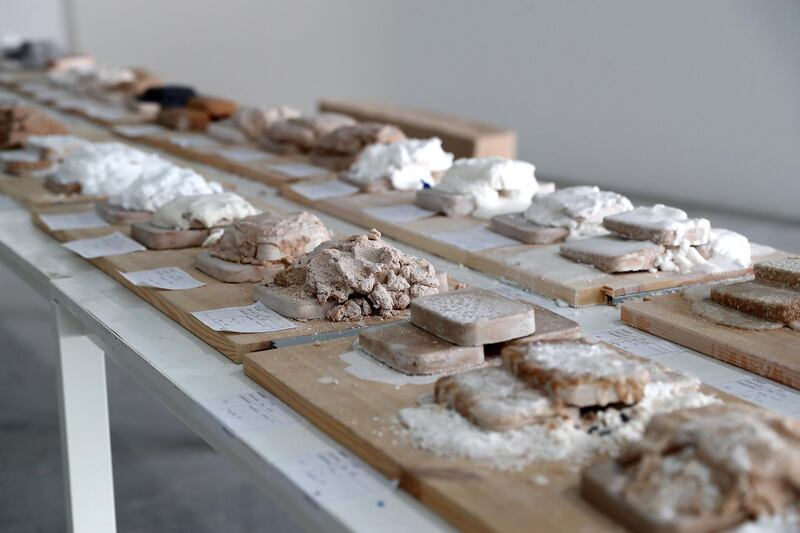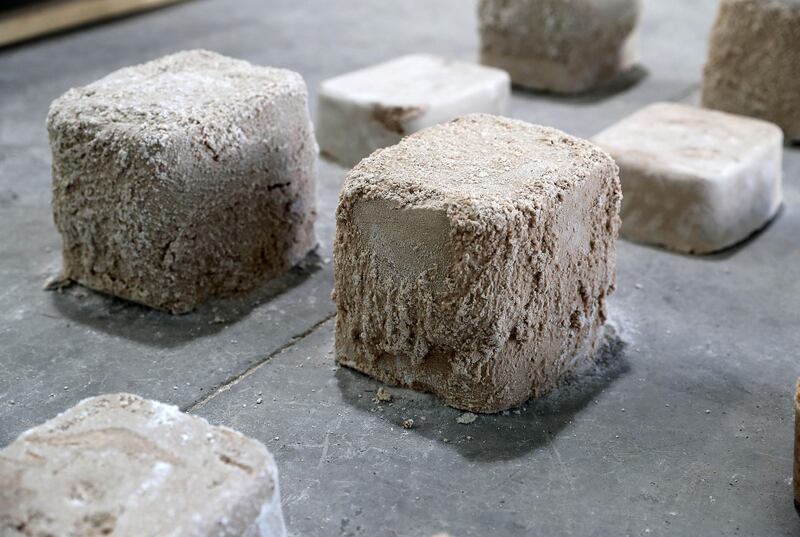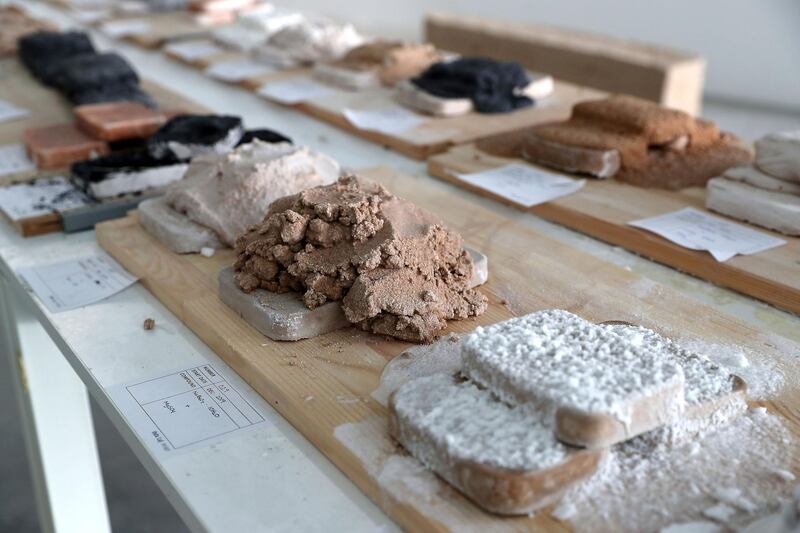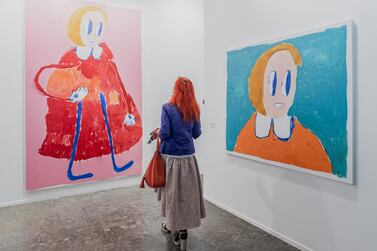Fragments of the country's salt flats fill a warehouse in Alserkal Avenue. Maps of the areas, known as sabkha, are pinned to the walls. Palm-sized slabs and cylindrical objects made from the crystallised salts are laid out on tables. A note beside each sample details the compositional mix and the finish used.
Wael Al Awar and Kenichi Teramoto, the architects curating the UAE Pavilion at the Venice Architectural Biennale, are comparing compound mixes to find a commercially competitive replacement to concrete – cement mixed with gravel and sand – one that could meet the demand of the construction sector. Their aim is to find a solution to a pressing environmental problem: the manufacture of concrete.
Cement is one of the most consumed substances on Earth, second only to water. But its production has a high environmental impact, releasing a substantial amount of carbon dioxide into the air and accounting for 8 per cent of all greenhouse emissions.
"If we are going to commit to emission standards and decrease carbon levels, we are going to have to use new methods of building, find new materials to build with," Al Awar says. The answer may lie in the sabkha.
The Sabkha
The salt flats, in which saline minerals accumulate, account for more than 5 per cent of the UAE's land mass and stretch along the country's Gulf coast, with pockets even found in the Liwa desert.
The curators will present these findings at the Venice Biennale in Wetlands, an exhibition that explores how the mineral compounds of the sabkha could inspire the development of a competitive alternative to Portland cement, the most widely used cement mix in the industry. "Sabkha are among the UAE's richest geological features," Al Awar says, "and their mineral makeup has the potential to create a renewable, natural building material that is equivalent in scale, cost and strength to Portland cement."
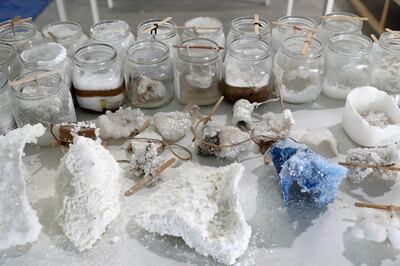
But Al Awar and Teramoto are clear that they do not extract the salts directly from the sabkha. "The sabkha should be preserved," they say, revealing that they instead procure sabkha salt from brine in desalination plants. "The residual brine is usually thrown back into the Gulf, which can cause environmental problems by increasing the salinity levels."
The need to replace Portland cement
Al Awar points out that with every tonne of Portland cement produced, one tonne of carbon dioxide is released into the air. "With a single tonne, you can only make a wall of about that size," he says, pointing to the side of a warehouse in Alserkal.
"Imagine how much carbon dioxide is released into the air every time a building is built. If Portland cement was invented today, there is no way that any legislative body would approve it." In contrast, sabkha-based building materials, such as the one with which Teramoto and Al Awar are experimenting, absorb carbon dioxide as they cure. But while this may be beneficial to the environment, it also brings certain challenges, especially when it comes to construction speed and workability.
"The curing process is longer, the material needs more carbon dioxide to harden than it can absorb from the environment," Al Awar says. He explains that developing the technology to cure the material efficiently will take time and investment.
The Shali Fortress
This is not the first time that salt rocks have been considered for building purposes. The Siwa Oasis in Egypt, located 50 kilometres from the Libyan border, is home to about 33,000 people.
They are mostly Berbers who have developed a distinct dialect and culture unique to themselves. But what makes Siwa Oasis most interesting is the massive 13th-century fortress that looms from its centre. The Shali fortress was built from salt rocks from the local salt lakes and mud. Few outsiders were admitted and, for centuries, it withstood countless invasions. But three days of rain in 1926 managed to do what no invader could. The structure's roof collapsed and it is now a ruin of salt rocks.
Al Awar says that though he and Teramoto are inspired by the fortress, they are careful not to fall in the trap of nostalgia.
"We don't want make vernacular architecture. Our research is aimed at tackling bigger problems," Al Awar says. "We need a building material that can meet the demands of the 21st century. There are expectations in the construction sector, and we are acknowledging that. We are acknowledging that a 10-storey building has to be finished within one year."
Al Awar and Teramoto are still in the early phases of their research. The objects in the warehouse look like works of art – the salt particles within them shimmer and the shapes they have taken look like abstract installations. They are experiments – conducted in partnership with the American University of Sharjah, New York University Abu Dhabi and the University of Tokyo. But the duo, studying the local geology and geography, are confident in the manufacturing possibilities of sabkha salt minerals.
While it remains to be seen as to when a sabkha-based alternative to cement will be used in the construction sector, anyone interested in learning more can make their way to the UAE Pavilion warehouse at Alserkal to look at the architects' research.
